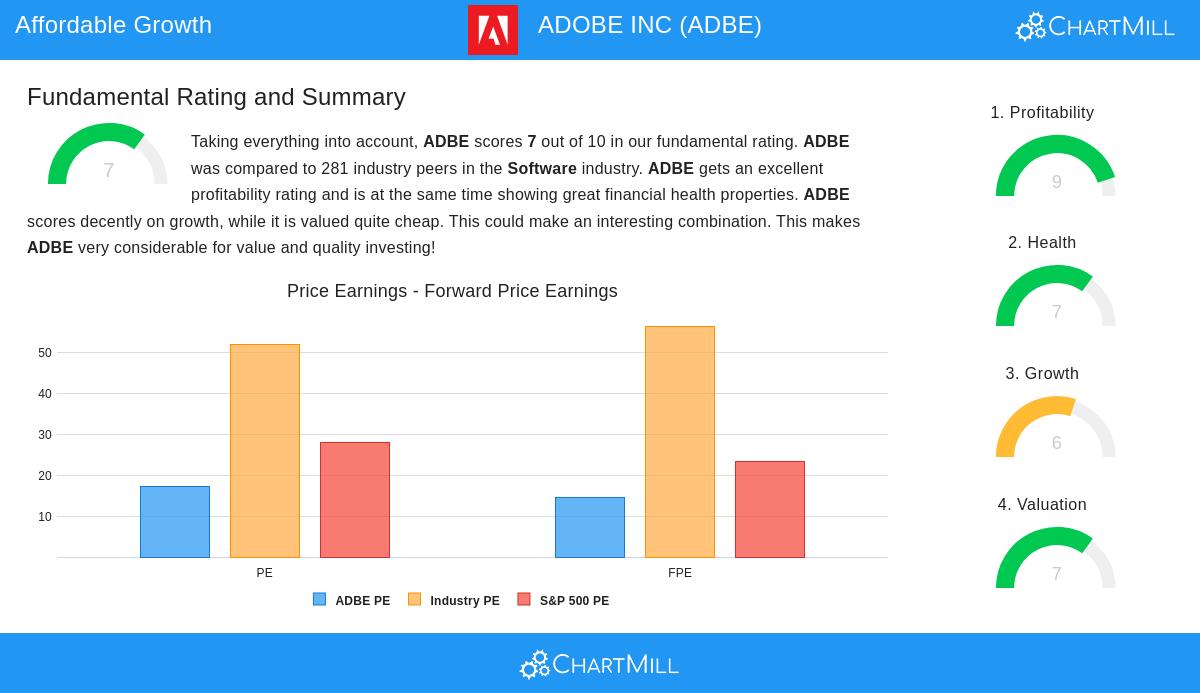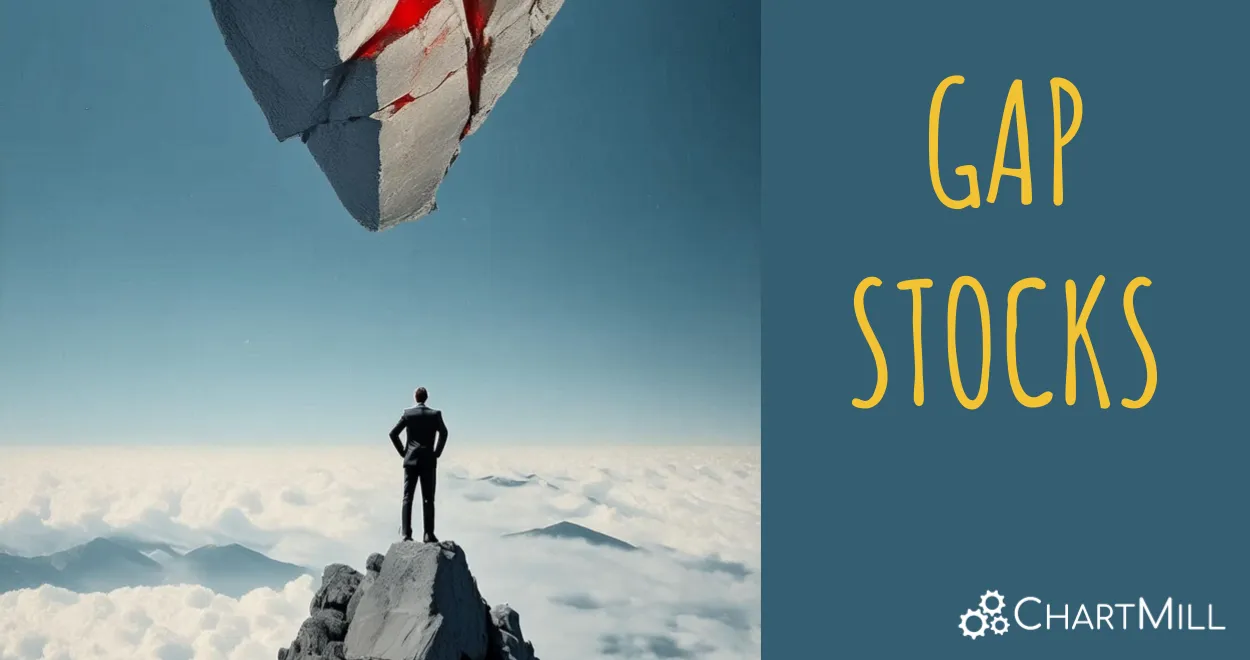Adobe Inc. (NASDAQ:ADBE) Passes Peter Lynch's GARP Investment Screen
By Mill Chart
Last update: Oct 6, 2025
The investment philosophy created by Peter Lynch focuses on finding companies with good growth possibilities that are available at fair prices, a method often called Growth at a Reasonable Price (GARP). This method steers clear of the outer edges of pure growth or deep value investing, concentrating instead on businesses that show steady enlargement, sound finances, and earnings without needing overly high investor prices. By using a structured filtering process built on Lynch's standards, investors can methodically find possible long-term investments.
ADOBE INC (NASDAQ:ADBE) functions as a worldwide technology frontrunner, delivering digital marketing and media answers through its three primary sections: Digital Media, Digital Experience, and Publishing and Advertising. The company's products, including those in its Creative Cloud and Adobe Experience Cloud, are essential instruments for creative experts and companies around the globe, driving digital interactions across many platforms.

Meeting Peter Lynch's Growth Standards
A fundamental part of Lynch's method is finding companies with steady earnings increases. He specifically looked for businesses increasing between 15-30% each year, thinking this span showed realistic enlargement instead of unmaintainable fast growth. Adobe shows good agreement with this idea through its past results and future outlook.
- Historical EPS Growth: Adobe's earnings per share have increased at an average yearly pace of 18.69% over the last five years, fitting well inside Lynch's desired span of 15-30%.
- Future Growth Expectations: Analysts estimate continued EPS growth of about 10.15% per year, pointing to maintained, though slower, enlargement.
This reliable history of earnings growth implies Adobe has effectively grown its business model and keeps a competitive standing in its field, important qualities Lynch considered necessary for long-term wealth building.
Price Evaluation Using the PEG Ratio
Lynch made common the use of the Price/Earnings to Growth (PEG) ratio to decide if a stock is fairly valued compared to its growth speed. A PEG ratio of 1 or lower was his standard for a good price, showing the market might not be completely valuing the company's growth possibility.
Adobe's PEG ratio, figured using its past five-year earnings growth, is about 0.92. This is lower than Lynch's limit of 1, implying the stock is fairly valued when its historical growth is considered. While the forward-looking P/E ratio seems acceptable, the historical PEG shows that investors are not paying too much for Adobe's confirmed growth path, a key point for GARP investors.
Financial Condition and Earnings Ability
Lynch required investing in financially stable companies, using measurements like Debt-to-Equity and Return on Equity (ROE) to check soundness and operational effectiveness. A good financial base lowers risk and helps continued growth without too much dependence on borrowed money.
- Debt-to-Equity Ratio: Adobe's ratio of 0.53 is under the screen's highest allowed of 0.6, showing a sensible use of debt and equity funding.
- Return on Equity: The company's ROE of 59.11% is much higher than the 15% minimum needed by the screen, putting it with the best in its field and indicating very effective use of owner money.
- Current Ratio: At 1.02, Adobe satisfies the screen's need for enough immediate payment ability.
Fundamental Review Summary
A detailed fundamental report on Adobe gives it a good rating of 7 out of 10, emphasizing its superior earnings ability and financial condition. The company's profit margins and returns on invested money are graded with the best in the software field. While its price is not seen as very low, it is judged as quite fair, particularly when thinking about its high-standard profile. The report ends by saying these traits make Adobe fitting for both quality and value-focused investment methods, matching well with the ideas of GARP investing.
Summary for Long-Term Investors
Adobe offers a strong case for investors looking for growth at a fair price. It effectively satisfies a screen founded on Peter Lynch's approach by showing a past of good, maintainable earnings growth, a fair price when judged by the PEG ratio, and excellent earnings ability supported by a sound financial setup. For long-term investors, these points come together to indicate a company that is both high-standard and fairly priced, the main idea of the GARP philosophy.
The Peter Lynch screen is a useful initial step for finding possible investments. You can review other companies that currently satisfy these standards by going to the Peter Lynch Strategy Stock Screener.
Disclaimer: This article is for informational purposes only and does not constitute financial advice, a recommendation, or an offer or solicitation to buy or sell any securities. All investment decisions carry risk, and you should conduct your own research and consult with a qualified financial advisor before making any investment decisions.
326.95
-0.4 (-0.12%)
Find more stocks in the Stock Screener
ADBE Latest News and Analysis





